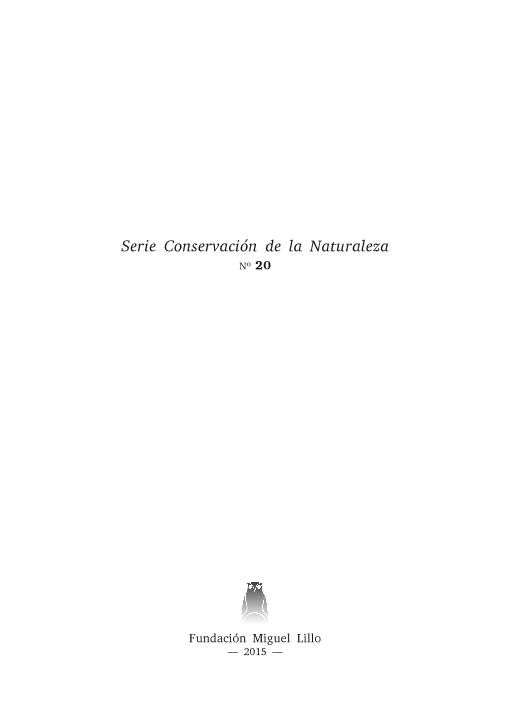Mostrar el registro sencillo del ítem
dc.contributor.author
Buti, Cristina Isabel

dc.contributor.author
Cancino, F.
dc.contributor.author
Ferullo, S.
dc.contributor.author
Gamundi, C.
dc.date.available
2017-02-14T21:50:16Z
dc.date.issued
2015
dc.identifier.citation
Buti, Cristina Isabel; Cancino, F.; Ferullo, S.; Gamundi, C.; Diversidad y evaluación toxicológica de peces como indicadores de contaminación por mercurio, plomo, cadmio, cobre y arsénico, provincia de Tucumán, República Argentina; Fundación Miguel Lillo; Serie de Conservación de la Naturaleza; 20; 2015; 3-34
dc.identifier.issn
0325-9625
dc.identifier.uri
http://hdl.handle.net/11336/13035
dc.description.abstract
El deterioro de la calidad de agua en ambientes naturales es inherente a cualquier actividad humana. La actividad minera impacta en los cuerpos de agua, ocasionando la acumulación de metales pesados en la biota acuática. La detección de éstos, en peces comestibles, es un tema prioritario ya que se bioacumulan y magnifican, comprometiendo la salud del hombre, la de otros organismos que los ingieren y del ambiente. Hasta el presente trabajo, no se había realizado este tipo de estudio en peces de Tucumán. El objetivo del trabajo fue evaluar: la acumulación de metales pesados y la biodiversidad de peces en relación con la contaminación. Se realizaron nueve viajes de colecta en ríos y embalses (de octubre a noviembre de 2000), se registraron 27 especies, encontrando en ambientes más poluídos: menor riqueza de especies, diversidad y equidad y que están habitados por una especie dominante generalista. Se evaluaron 5 metales pesados bioacumulados: mercurio, cadmio, plomo, cobre y arsénico, de los cuales los tres primeros superaron los niveles guía del Có- digo Alimentario Argentino y la Organización Mundial de la Salud, en especies que se usan para consumo humano. Se debe evaluar regularmente tejidos de peces y tomar medidas restrictivas, no de pesca deportiva pero si de consumo de las especies afectadas.
dc.description.abstract
The deterioration of water quality in natural environments is inherent to any human activity. Mining activities impact on water bodies, causing the accumulation of heavy metals in aquatic biota. Its detection in edible fish is a priority, since it bioaccumulates and magnifies, compromising human health, that of other organisms that ingest them and the environment. Until now, this type of study had not been conducted in fishes in the Tucumán province. The objective of this study was to evaluate: the accumulation of heavy metals and the fish biodiversity in relation to pollution. Nine collecting trips were conducted in rivers and dams (from October to November of 2000). Twenty-seven species were recorded, finding in more polluted environments: lower species richness, diversity and equity and the presence of a generalist dominant species. Mercury, cadmium, lead, copper and arsenic were evaluated, of which the first three exceeded guide levels of the Argentine Food Code and the World Health Organization, in species used for human consumption. Fish tissue samples should be regularly examined and restrictive measures should be taken, not on fishing sports, but on the consumption of involved species.
dc.format
application/pdf
dc.language.iso
spa
dc.publisher
Fundación Miguel Lillo
dc.rights
info:eu-repo/semantics/openAccess
dc.rights.uri
https://creativecommons.org/licenses/by-nc-sa/2.5/ar/
dc.subject
Biodiversidad de Peces
dc.subject
Metales Pesados
dc.subject
Contaminación Minera
dc.subject
Tucumán
dc.subject.classification
Conservación de la Biodiversidad

dc.subject.classification
Ciencias Biológicas

dc.subject.classification
CIENCIAS NATURALES Y EXACTAS

dc.title
Diversidad y evaluación toxicológica de peces como indicadores de contaminación por mercurio, plomo, cadmio, cobre y arsénico, provincia de Tucumán, República Argentina
dc.title
Diversity and toxicological evaluation of fish as contamination indicators for mercury, lead, cadmium, copper and arsenic in Tucumán province, Argentina
dc.type
info:eu-repo/semantics/article
dc.type
info:ar-repo/semantics/artículo
dc.type
info:eu-repo/semantics/publishedVersion
dc.date.updated
2017-02-13T20:26:09Z
dc.journal.volume
20
dc.journal.pagination
3-34
dc.journal.pais
Argentina

dc.journal.ciudad
San Miguel de Tucumán
dc.conicet.avisoEditorial
Prohibida su reproducción total o parcial
dc.description.fil
Fil: Buti, Cristina Isabel. Fundación Miguel Lillo; Argentina. Consejo Nacional de Investigaciones Científicas y Técnicas; Argentina
dc.description.fil
Fil: Cancino, F.. Fundación Miguel Lillo; Argentina
dc.description.fil
Fil: Ferullo, S.. Provincia de Tucumán. Unidad de Gestión Ambiental. Dirección de Minería; Argentina
dc.description.fil
Fil: Gamundi, C.. Provincia de Tucumán. Unidad de Gestión Ambiental. Dirección de Minería; Argentina
dc.journal.title
Serie de Conservación de la Naturaleza
dc.relation.alternativeid
info:eu-repo/semantics/altIdentifier/url/http://www.lillo.org.ar/editorial/index.php/publicaciones/catalog/book/111
Archivos asociados
